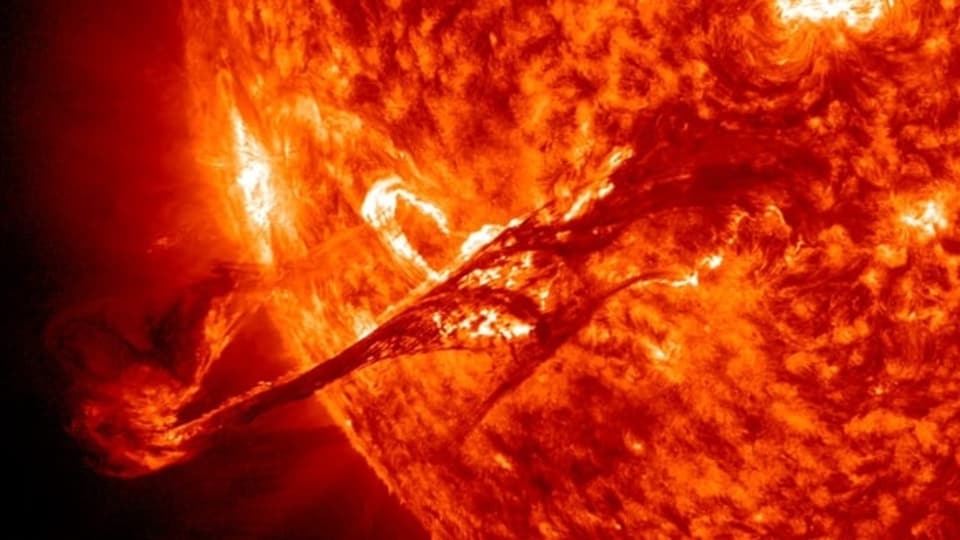Solar storm HITTING Earth tomorrow; Radio Blackouts expected in many regions
A solar storm is expected to hit the magnetic fields of Earth tomorrow, August 3. High-speed solar winds moving towards the Earth are responsible for the incoming storm. Aurora display and radio blackouts are expected.

Last week witnessed very low solar activity but it seems that the Sun is now finally gearing up. Earlier, it was reported that a new sunspot emerged on the Earth facing a solar disk which was behaving erratically. In just 24 hours after coming into the Earth's view, the sunspot tripled in its size. And now it appears that a solar storm will strike our planet tomorrow, August 3. This particular solar storm event is not related to the sunspot, which still continues to grow. High-speed solar winds which escaped from the atmosphere of the Sun are responsible for this incoming storm. Read on to find out just how dangerous it can be.
It was first reported by SpaceWeather.com which noted on its website, “NOAA forecasters say there is a chance of minor G1-class geomagnetic storms on Aug. 3rd when a high-speed stream of solar wind is expected to graze Earth's magnetic field. The gaseous material is flowing from a southern hole in the sun's atmosphere”. The website has also added an image of the exact zone from where the solar winds were released into space and towards the Earth. You can check it out here.
Solar storm to strike Earth tomorrow
As the predicted solar storm is of G1 class, which is classified as minor, the storm is not likely to cause much trouble for us. However, it will cause aurora display in the higher latitudes. Aurora displays are the beautiful curtain-like light patterns in the sky that happen as a result of refraction of light as the solar radiation hits the atmosphere at odd angles. Alongside, there is a minor probability of shortwave radio blackouts, which can affect ham radio operators and some navigation systems on the dayside of the Earth.
Solar storms are divided into five classes ranging from G1 to G5. While G1 is the most minor type of solar storm that can hit the planet, a G5 is the most severe. A good example of a G5 solar storm is the Carrington Event that took place in 1859 and destroyed telegraph systems and caused power grid failures.
Catch all the Latest Tech News, Mobile News, Laptop News, Gaming news, Wearables News , How To News, also keep up with us on Whatsapp channel,Twitter, Facebook, Google News, and Instagram. For our latest videos, subscribe to our YouTube channel.































